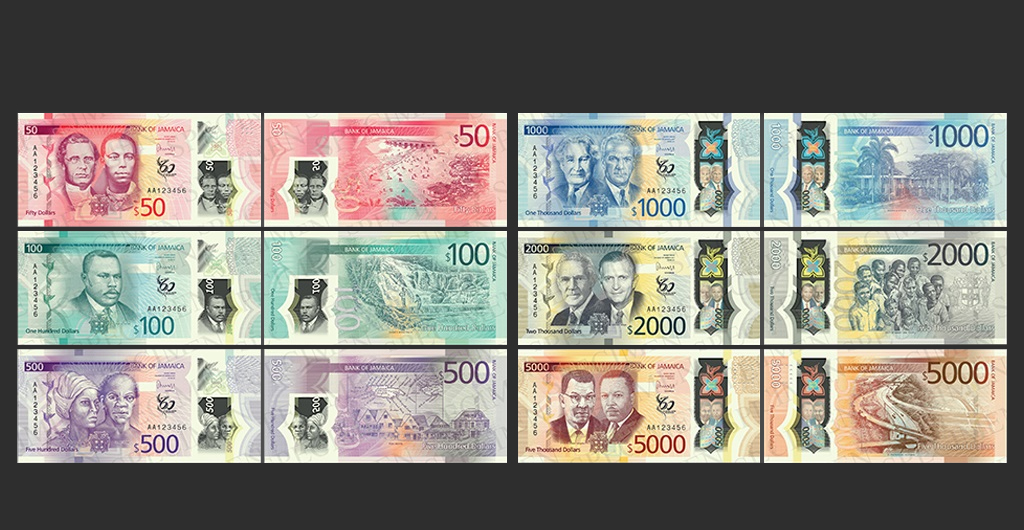Jamaica’s new banknotes ready for circulation
The new Jamaican banknotes have arrived and will be put into circulation in 2023.
Minister of Finance and Public Service Dr Nigel Clarke revealed the printed polymer notes at a Bank of Jamaica (BOJ) press briefing on Thursday (December 15).
“These notes are notably distinct from those that exist now. Clarke explained that the Bank of Jamaica must cooperate with the existing commercial banks to guarantee that the ATMs can be effectively reprogrammed to handle the new banknotes before they can be put into circulation.
The entire process of currency circulation could take up to six months, with an estimated completion date of June 2023.
The new series, which was revealed by the Minister during the March 2022/23 House of Representatives Budget Debate, involves the introduction of a $2,000 bill and revamping the complete suite of notes.
Clarke emphasized that they adhere to the decades-old principle of portraying Jamaica’s culture and history, “and in particular, any face that appears on one side of the banknotes is the face of a National Hero or deceased Prime Minister.”
Thus, all five deceased former Jamaican prime ministers and seven national heroes are shown on the six banknotes.
Clarke added that the notes are less prone to counterfeiting and more user-friendly for visually challenged individuals.
Governor of the Central Bank, Richard Byles, emphasized that to stay ahead of counterfeiters and more effectively mitigate and manage risks associated with counterfeiting, “the BOJ has enhanced the integrity of Jamaica’s banknotes by incorporating more cutting-edge security features into the new series of notes.”
He stated that the newly announced currencies would alleviate public worries that the old $500 and $5,000 bills are difficult to distinguish in low-light settings.
Byles noted, “By assigning each banknote a specific hue, the redesign assures that each denomination can be quickly recognized and distinguished from other banknotes.”
He reaffirmed that the new notes, printed on polymer substrate, are anticipated to endure at least 50 per cent longer than their predecessors, which have a lifespan of approximately two years.
As a result, the Bank of Japan has stated that its banknote reorders amounts will be reduced, as replacements will occur less regularly.
This is anticipated to result in cost savings and a boost in the Central Bank’s currency replacement operations’ efficiency.
The BOJ stated that arrangements are also being made to dispose of polymer waste without harming the environment.
This is the second time a series of banknotes has been issued in Jamaica’s history.
The banknotes were made by the largest integrated commercial banknote printer in the world, the British company De La Rue, which Clarke complimented for the “rapid turnaround”.



